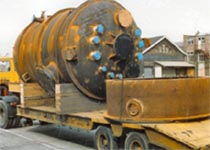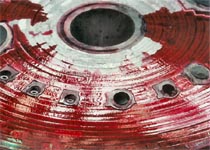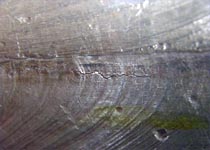
Figure 1.

Figure 2.

Figure 3.
Background
Enspec were asked to monitor the fabrication of a new hydrothermal reactor vessel shown in figure 1. The vessel was a replacement unit for a reactor which had suffered from excessive erosion from the sand used in the process. The original vessel had been fabricated from clad plate.
Previous work had been undertaken to assess the corrosion resistance of the electroslag weld deposit and this is reported elsewhere. It had been found that an electroslag overlayed vessel could be deposited more quickly and more cheaply than a clad vessel. The small diameter nozzles were solid alloy 625, whereas the larger diameter nozzles were to be manually overlayed using the SMAW (MMA) process with a nickel alloy - Alloy 625.
Enspec were also requested to provide guidance with respect to level of non-destructive testing that was to be carried out during construction.
Findings
In discussions about quality control and defect acceptance criteria with the client and the fabricator, it was agreed that the complete internal surface would be subjected to a dye penetrant test. Figure 2 shows the bottom dish being tested. The tests revealed a number of defects in the weld overlay i.e.
- Interdendritic porosity in the weld stop positions.
- Centreline cracking (figure 3) and incomplete fusion.
Key Point
- Had it not been for Enspec's recommendation to carry out a dye penetrant examination of the entire clad surface, a number of cracks would have remained undetected as they were not visible to the naked eye.